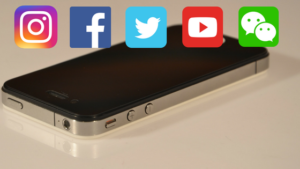 Tweens and teens spend a tremendous amount of their social lives on digital and social media. They communicate through text, chat, e-mail or live video feed. A teenager is just as likely to send a picture or video through Snapchat or Instagram then have an in-person conversation. Not surprisingly, with hormones raging, many of these exchanges can become sexually charged. Many people are no longer shocked to hear about a “dick pic” sent into cyberspace, as it happens so often. Parents easily lower their guard and fail to monitor their teen’s online activity. Boys will be boys, right? Wrong. The Courts may charge a teenager with a felony for sending a naked photograph over social media! What’s worse, the charge may be one of child pornography.
Tweens and teens spend a tremendous amount of their social lives on digital and social media. They communicate through text, chat, e-mail or live video feed. A teenager is just as likely to send a picture or video through Snapchat or Instagram then have an in-person conversation. Not surprisingly, with hormones raging, many of these exchanges can become sexually charged. Many people are no longer shocked to hear about a “dick pic” sent into cyberspace, as it happens so often. Parents easily lower their guard and fail to monitor their teen’s online activity. Boys will be boys, right? Wrong. The Courts may charge a teenager with a felony for sending a naked photograph over social media! What’s worse, the charge may be one of child pornography.
In a 2017 case, the Washington Supreme Court held that a juvenile could be prosecuted for the felony crime of “Dealing in Depictions of Minors Engaged in Sexually Explicit Conduct” by sending an electronic photo transmission of his manhood. The Court saw no legal problem that the transmitter was only displaying his own privates, as it was undisputed he was underage. The 17 year old sent “an unsolicited picture of his erect penis” to an apparently unwilling recipient, who contacted the police. A case of teenage “sexting” gone horribly wrong.
The case immediately took on First Amendment overtures. Of course, child pornography is outside the protection of the First Amendment. But was this truly a case of child pornography? The teen’s attorney argued it was not. No minors were exploited. It was the teenage boy’s choice to snap and send his own naked image. His attorney argued the teen should have the same right as an adult to take voluntary photos of his own body, and his act was free speech entitled to First Amendment protection. The Washington Supreme Court did not buy into this, although they recognized his constitutional argument was really that the ‘Dealing in Depictions of Minor’ statute was too overbroad.
However, the focus on ‘exploitation’ was the major hang-up for the three person minority dissent in the case. Children aren’t usually held criminally responsible when they are depicted in sexually explicit conduct. In fact, the Court recognized that these young victims of exploitation should be protected “from criminal liability for their own depiction in such conduct”. In this case, the dissenting vote was acknowledging that the teenager should be protected from his own stupidity.
The teen did not help himself by sending his photo with the phrase “Do u like it, babe?” He didn’t sound like a victim, which the majority picked up on in dispelling the “protected juvenile class” argument. According to the majority, this principle only applied to victims who are presumably under the influence of their victimizers. The teen was working alone; thereby he could indeed be a victimizer, even as a juvenile.
This logic appears to dispel another argument: what if the teen had sent his sexually explicit photo to a willing recipient? The Court recognized this possibility, but stated since he “was not a minor sending sexually explicit images to another consenting minor, we decline to analyze such a situation.” The fact that the recipient of the teen’s picture was an unwilling 22 year old adult appears to make no difference in the majority’s finding. The presence or absence of an unwilling recipient was not critical to their analysis.
Clearly the Courts are using this case to send a message. It’s a “cautionary tale” case. The lesson is a young adult sending intimate photos of himself (or herself) can be criminally prosecuted. Parents better take a closer look at those texts, tweets and snaps!
